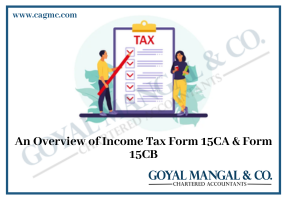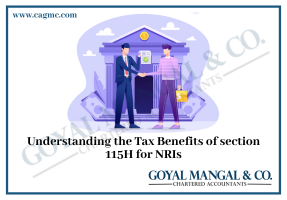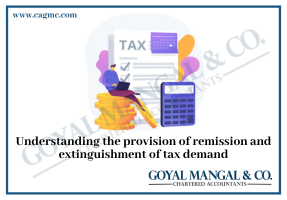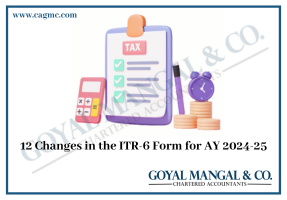
Welcome to our blog where we delve into the concept of luxury tax in India. As a nation of diverse lifestyles and preferences, luxury finds its place in various sectors, from hospitality to entertainment. This tax, designed to apply to goods and services considered luxurious, adds an interesting layer to the taxation landscape. Join us as we uncover the nuances of exploring luxury tax in India, its applicability, and its impact on both consumers and businesses. Through this exploration, we aim to shed light on an often-discussed yet not fully understood aspect of Luxury taxation in India.
| Table of Content |
Meaning of Luxury Tax
The Luxury Tax is an indirect statutory tax imposed primarily on hotel, leisure, and resort services. It does not apply to beverages and cuisine served in hotels and other locations.
According to the Luxury Tax Act, ‘Luxury’ refers to a service or commodity that is defined as providing a person with comfort, enjoyment, or gratification. Even if a person dislikes a particular hotel or accommodation, according to the Luxury Tax Act and State Luxury Tax Rate, he or she must pay the applicable taxes.
For an exceptionally long period, the Indian tax administration has struggled with the concept of luxury. The government’s implementation of the Goods and Services Tax (GST) has placed “luxury items” in the 28% highest tax bracket. It is difficult to define luxury because it is subjective by nature. One person’s luxury can often be another person’s necessity.
Goal of Luxury Tax
The introduction of Goods and Services Tax (GST) has significantly altered the previous indirect tax structure, streamlined the taxation system, and eradicated multiple taxes. The requirement to submit commercial taxes, including luxury tax, on a monthly or quarterly basis has been eliminated. The taxation process has become more organized and systematic under the GST regime.
The Luxury Tax in India must now be paid by the last day of the month following the month of assessment, streamlining the payment schedule. This has increased the overall effectiveness of the taxation procedure. In addition, the new tax system provides precise definitions for luxury goods and services. These establishments include hotels, restaurants, health clubs, spas, cosmetic salons, and swimming pools. By classifying these goods and services, the GST system increases the transparency of the tax structure.
Luxury tax history
In 1996 the introduction of the luxury tax in India takes place as a means of generating revenue from the hospitality industry. Initially, the tax targeted luxury hotels and resorts catering to high-net-worth individuals, with a concentration on hotel room rates.
The implementation of the luxury tax was the responsibility of individual state administrations, resulting in varying tax rates between states. Others imposed a flat fee based on the hotel’s star classification.
In 2009, the government replaced the previous system of variable tax rates with a uniform 12.5% tax rate on hotel room rates. This standardisation aimed to establish a more uniform and straightforward tax structure. In 2016, the luxury tax and other indirect taxes were finally absorbed by the Goods and Services Tax (GST). This integration led to a complete reform of the taxation system, unifying various taxes under a single structure.
Luxury tax return
In India, the Commercial Taxes Department or the Excise Department in each state oversees the collection of Luxury Tax. To effectively impose and collect Luxury Tax in an organized manner, these departments are further subdivided into specific departments, such as VAT, Service Tax, and Entertainment Tax.
To fulfil their responsibilities, these departments have expanded their functionalities and established state-specific websites and other channels. These platforms permit residents to access the required forms and register themselves or their enterprises for Luxury Tax payments. The registration procedure ensures that individuals and business proprietors can meet their obligations by paying the applicable luxury taxes.
Several indirect taxes have been unified following the implementation of the Goods and Services Tax (GST), thereby simplifying the overall taxation process. Unlike the previous requirement to file commercial taxes, including luxury taxes, on a monthly or quarterly basis, the GST has standardized the taxation process. The GST return filing procedure and deadlines are uniform across all industries in India. According to the GST rule, Luxury Tax must be paid by the last day of the month following the month of assessment.
Applicability of Luxury Tax
Luxury Taxes fell within the scope of all State Luxury Acts. The luxury tax is applicable to following services:
- State-mandated services provided to club members, such as a deposit, a fee, a donation, or any other charge.
- The amenities offered by hotels to their guests.
- Customers utilizing spas, cosmetic salons, health clubs, and swimming pools.
- A hospital providing services more than Rs.1000 per day at 8% tax
Tax Rate on Luxury items
The tax on luxury products and services may apply to hotels, lodging houses, resorts, and conference/congregational halls, among others. There are additional organizations with lodging facilities that may also be subject to luxury tax. Under the GST system, the GST council has established various tax brackets for hotels and restaurants based on their revenue and whether they are air-conditioned.
This now necessitates that consumers pay depending on the type of restaurant they are visiting, i.e., with or without air conditioning. The tax rates for restaurants in 5-star and 7-star hotels will be higher at 28%.
List of Luxury Tax rates 2023-24 on hotels:
- If room tariff is less, then Rs.1000 then GST rate applicable is 0%
- If room tariff is between 1000 to 2500 then GST Rate will be 12%
- If room tariff is between 2500 to 7500 then GST Rate will be 18%
- If room tariff is more than 7500 then rate is 28%
Tax rates incurred by hotels:
- The tax rate for restaurants with a turnover of less than Rs. 50 lakhs will be 5%.
- There will be a 12 percent tax on non-ac restaurants.
- AC restaurants are subject to an 18% levy.
- Five-star establishments will be required to collect a 28% luxury tax.
- Hotels, lodges, and clubs with rates below Rs 1,000 will be subject to a 5% tax.
- The tax rate for hotels, lodges, and clubs with rates between Rs 1,000 and Rs 2,500 is 12%.
- The tax rate for hotels, lodges, and clubs with rates between Rs 2,500 and Rs 5,000 is 18%.
Objections on Luxury tax
The luxury tax, which was initially intended to discourage luxury consumption among the affluent elite, has been criticized for being regressive and impacting the middle class, which also consumes luxury goods and services.
Final words
In conclusion, the luxury tax in India serves as a distinctive avenue for generating revenue while reflecting the evolving preferences of consumers. As our society’s definition of luxury evolves, so does the scope of this tax. While it brings additional financial burdens to consumers of high-end goods and services, it also contributes to government initiatives and public welfare projects. For businesses operating in sectors subject to luxury tax, understanding its implications and proper implementation becomes pivotal. As India’s economic landscape continues to transform, the luxury tax remains a relevant and impactful component of the taxation framework, reflecting the interplay between indulgence and fiscal responsibility.







